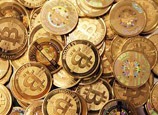
Thanks to falling unemployment, rising home values, and record stock prices, an emerging consensus of forecasters, market participants, and policymakers has now concluded that the US consumer is finally back.
Don't believe it. First, consider the facts: Over the 21 quarters since the beginning of 2008, real - inflation-adjusted - personal consumption has risen at an average annual rate of just 0.9 percent. That is by far the most protracted period of weakness in real US consumer demand since the end of World War II and a massive slowdown from the pre-crisis pace of 3.6 percent from 1996 to 2007.
With household consumption accounting for about 70 percent of the US economy, that 2.7 percentage point gap has been enough to knock 1.9 percentage points off the post-crisis trend in real GDP growth. Look no further for the cause of the unacceptably high US unemployment.
Discretionary consumption is typically deferred during recessions, especially for long-lasting durable goods such as motor vehicles, furniture, and appliances. Once the recession ends and recovery begins, a "stock-adjustment" response takes hold, as households compensate for foregone replacement and update their aging durable goods.
Over most of the postwar period, this post-recession release of pent-up consumer demand has been a powerful source of support for economic recovery. In the eight recoveries since the early 1950s, excluding the brief pop following the credit-controls-induced slump in the 1980s, the stock-adjustment response lifted real consumption growth by 6.1 percent on average for five quarters following business-cycle downturns; spurts of 7 to 8 percent growth were not uncommon for a quarter or two.
By contrast, the release of pent-up demand in the current cycle amounted to just 3 percent annualized growth in the five quarters from early 2010 to early 2011. Moreover, the strongest quarterly gain was a 4.1 percent increase in the fourth quarter of 2010.
This is a stunning result. The worst consumer recession in modern history, featuring a record collapse in durable-goods expenditures in 2008 to 2009, should have triggered an outsize surge of pent-up demand. Yet it did anything but that. Instead, the release of pent-up consumer demand was literally half that of previous business cycles.
The third point is more diagnostic: The shockingly anemic pattern of post-crisis US consumer demand has resulted from a deep Japan-like balance-sheet recession. With the benefit of hindsight, we now know that the 12-year pre-crisis US consumer-spending binge was built on a precarious foundation of asset and credit bubbles. When those bubbles burst, consumers were left with a massive overhang of excess debt and subpar saving.
The post-bubble aversion to spending and the related focus on balance-sheet repair reflect what Nomura Research Institute economist Richard Koo has called a powerful "debt rejection" syndrome. While Koo applied this framework to Japanese firms in Japan's first lost decade of the 1990s, it rings true for America's crisis-battered consumers, who are still struggling with the lingering pressures of excessive debt loads, underwater mortgages, and woefully inadequate personal saving.
Through its unconventional monetary easing, the Fed is attempting to create a shortcut around the imperative of household sector balance-sheet repair. This is where the wealth effects of now-rebounding housing prices and a surging stock market come into play. But are these newfound wealth effects really all that they are made out to be?
Yes, the stock market is now at an all-time high but only in current dollars. In real terms, the S&P 500 is still 20 percent below its January 2000 peak. Similarly, while the Case-Shiller index of US home prices is now up 10.2 percent over the year ending March 2013, it remains 28 percent below its 2006 peak. Wealth creation matters, but not until it recoups the wealth destruction that preceded it. Sadly, most American households are still far from recovery on the asset side of their balance sheets.
Moreover, though the US unemployment rate has fallen, this largely reflects an alarming decline in labor-force participation, with more than 6.5 million Americans since 2006 simply giving up looking for work. At the same time, while consumer confidence is on the mend, it remains well below pre-crisis readings.
In short, the US consumer's nightmare is far from over.
Spin and frothy markets aside, the healing has only just begun.
Stephen S. Roach, a faculty member at Yale University and former Chairman of Morgan Stanley Asia, is the author of The Next Asia. Project Syndicate
















 5,000th baby born in
5,000th baby born in
water in Shanghai


![]()
